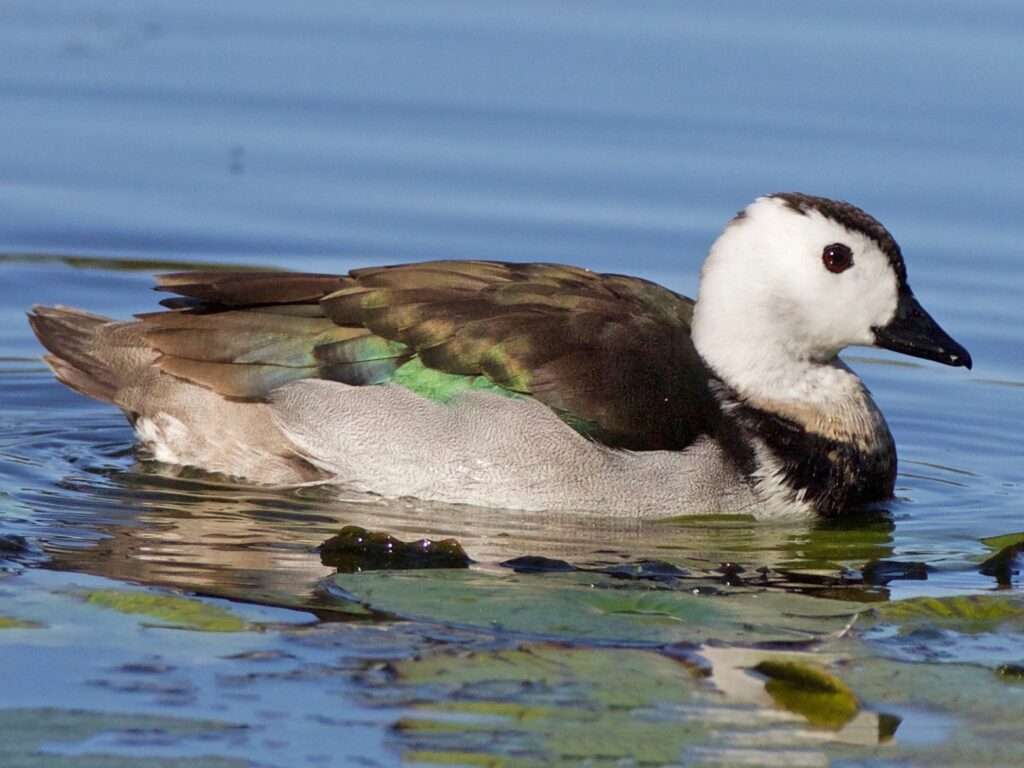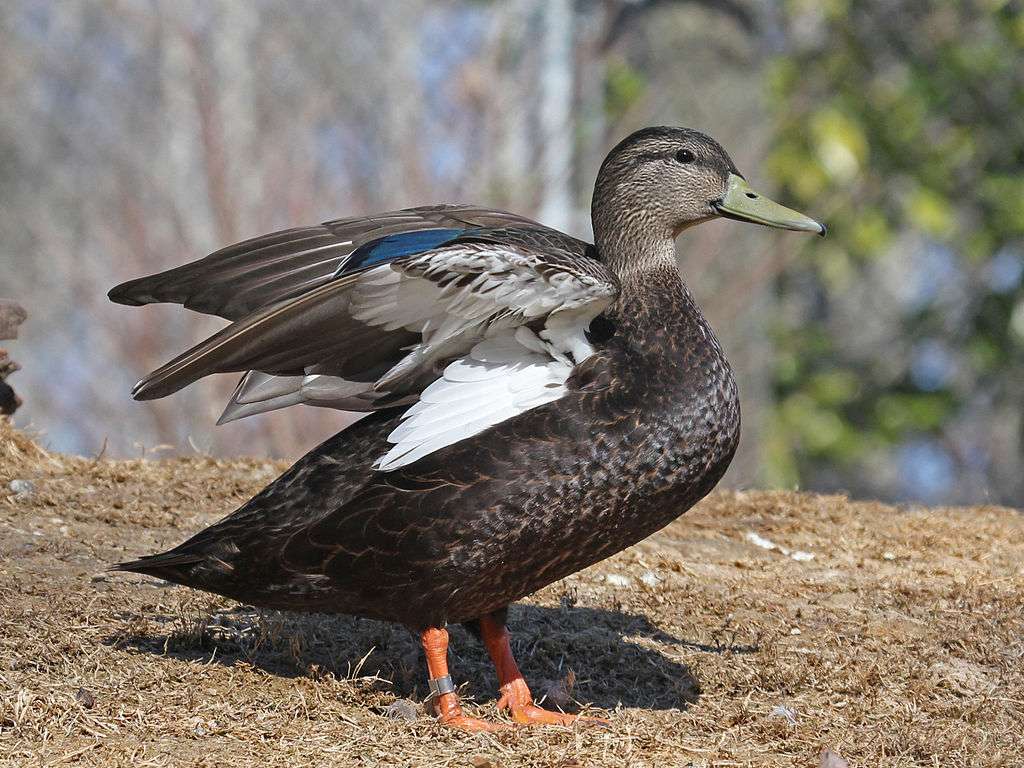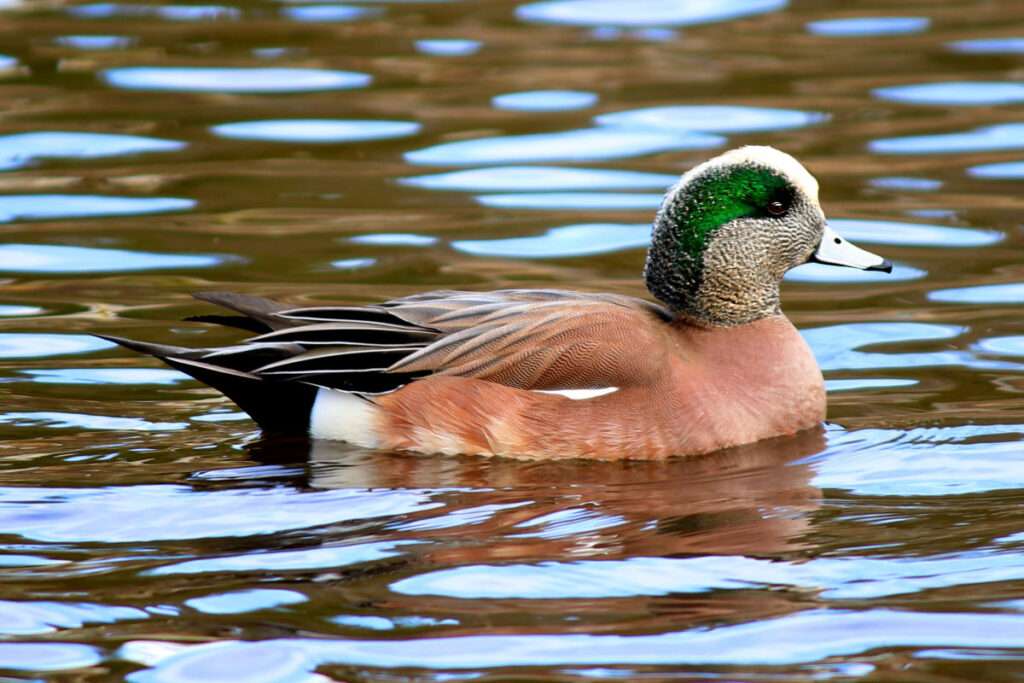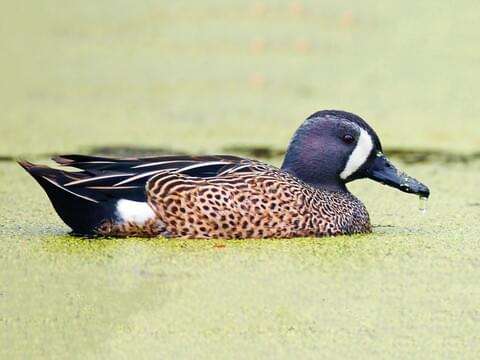
The cotton pygmy goose, sometimes known as the cotton teal or cotton pygmy goose. They are among the world’s tiniest waterfowl, and they inhabit small to large bodies of water with healthy aquatic flora.
Fun Fact
All three varieties of pygmy geese are buoyant swimmers who primarily graze on the water’s surface but occasionally dive for food. Due of their tiny legs, they all exhibit a dislike for walking on land. Usually observed in pairs or small flocks, Cotton Pygmy Geese can also be found in larger numbers.
Description
The short, deep base of the bill’s goose-like shape. Males have a blackish green broad collar at the base of the neck, a dark brown forehead, and a dark brown crown. The female has a duller head and an eyeline that is brown.
Instead of a collar, the female has spots, a flecked face, and a beautifully vermiculated neck. The eclipse or non-breeding male resembles the female, with the exception of its wider white wing band. The male flies with dark wings that have white flight feathers with black tips. The female has dark wings with some inner primaries, a few secondaries, and a white trailing edge. They feature a crimson eye, black legs, and a greenish bill on breeding males. The back toe has a narrow lobed shape. The nose, which opens near the base of the bill’s commissure, is tiny and oval in shape.
Super-ciliary stripes on downy chicks are white and meet at the rear of the head, which is black. On the pale face there is a short dark eye stripe. The gray part of the neck is the top. Two white spots can be seen on the scapulars, and the mantle is gray-brown in color. Dark gray to black describes the tail. The bottom is buff.

Predators
It has been documented that rock pythons prey on cotton pygmy geese.
Diet
Their natural habitat is still freshwater lakes, where they prey primarily on water lilies and other plants’ seeds. Crabs, insects, crustaceans, and pond plants.
Habitat
This species is widely dispersed throughout Asia, reaching as far as Australia. In reaction to rainfall and water availability, populations shift. In the summer, some populations move farther away (and are found only seasonally, for instance in Afghanistan). Individuals have been spotted as far west as Arabia and Jordan during the winter, and they are frequently found on islands in the area including the Maldives and the Andamans. Particularly in lakes and ponds with emergent vegetation, where they can forage, they can be found. In South Asia, you can even find them in little village ponds. In Australia, lagoons are where you’ll mostly find them. It is reported that they roost on trees.
As Pet
A common pet bird like the lovebird is known for being maintained as a pet, but this duck is not well known for that. The majority of these geese are discovered frolicking in the wild.
Table





